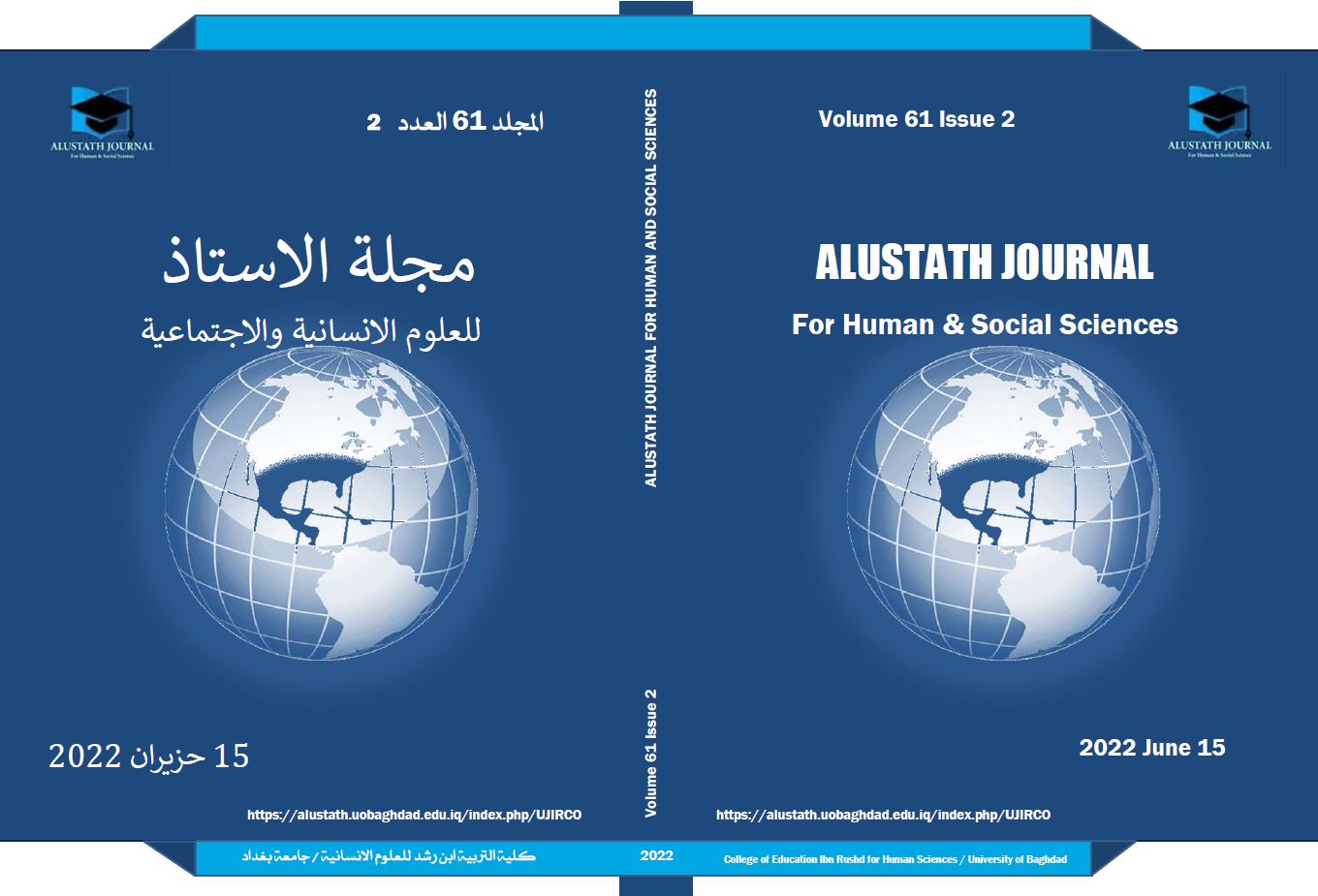DE Familiarization Replacement at Story of Prophet Noah
DOI:
https://doi.org/10.36473/ujhss.v61i2.1235Keywords:
Quran, story of Prophet Noah, DE familiarization Replacement, metaphorAbstract
DE familiarization is exit of simple and common language. It refers to ways that by using it speaker or reader try watch to his (her) environment by unusual type or new vision until surprised his (her) reader or contact. DE familiarization is not Quran’s Literary language but is a way that prepare space for contact, in, this situation contacts for better receive content do mental probe, also be excitement by receive it and more impression. Aim of this research is a deep review of Noah’s story by stylistic method and with DE familiarization Replacement that emerge in simile, metaphor and allusion. Another goal of this paper finds out some of unique and endless marvel of Quran’s literary language. This research has many results that some of that as follow: create exaggeration in mean and concept of verses, generalization of implication of verses, create excitement in contact, create tendency of thinking in contact, use of language emotional role and developing on mean and concept of verses that to cause put down pagan’s excuse and doubt.
Downloads
References
• The Holy Quran
• Al-Alusi, M, (1415), Ruh al-Ma'ani in the interpretation of the great Qur'an, Beirut: Dar Al-Kutub Al-Ilmiyya Press.
• Ibn Shu'bah al-Harrani, H (1404), Tohaf Aloghol, Qom, Islamic Publications Office.
• Ibn Ashur, M,(1999), Al tahrir va Altanvir, Beirut, History Foundation
• Ibn Manzur, M (2001), Lesan Al Arab, Beirut. Dar Al-Kutub Al-Ilmiyya Press
• Bahar, M, (1967), Stylistics, Tehran, Amir Kabir Publications.
• Al-Taftazani, S (2013), Al motavval, The investigator: Abdul Hamid Al-Hindawi, Beirut: Dar Al-Kutub Al-Ilmiyya Press.
• Jacobsen, R, (1993), Style in Language, Beirut: University Foundation for Studies, Publishing and Distribution.
• Al-Jorjani, Abdel-Qaher(2001), Asrar Al balaghat, Edited by: Abd al-Hamid al-Hindawi, Beirut: Dar al-Kutub al-Ilmiyya Press.
• ¬¬¬¬¬¬¬____________________(2008), Al Vesatat, Dar Al-Ihyaa Al-Kitab Al-Arabiya.
• Haghi Brosavy, I. (2001), Rooh Albayan, Beirut: Dar Al-Fikr Press.
• Al-Ragheb Al-Isfahani, H.M,(1991), Mofradat Al Qur'an,
• Zamakhshari, M (1986), Al Kashaf, Beirut: Arab Book House Press.
• Qutb,(1991), Fi Zellal Al Qur'an, Beirut: Dar Al Shorouk.
• Tabatabai. M(1996). Al Mizan. Qom: Qom Seminary Teachers Association.
• Al-Tabarsi. F(1993). Majma Al Bayan, Tehran: Naser Khosrow Publications.
• Al-Tusi. M.H.(1993), Al Tebyan, Beirut: Dar Ehya Alturas Press.
• Atigh. A,(2000), Elm Albayan, Beirut: Dar Al Nahda Arabia Press for printing, publishing and distribution.
• Alfakhr Alrazi.M(1999). Meftah Al Gheab, Beirut: Dar Ehya Alturas Press.
• Al-Firuz Abadi. M(2004), Al Ghamos Al Mohit, Beirut: Dar Al-Kutub Al-Ilmiyya Press.
• Mohammad Rezaei, A; Gholam Alizadeh,M.(2018), Roles and Role Oriented in the Arabic Applicable. Tehran. University of Tehran Press.
• Irene Rima, Makaryk (1993). Encyclopedia of contemporary literary theory: approaches, scholars, terms. Toronto: University of Toronto Press.
• Al-Masdi, Abd al-Salam (2008), Stylistics And Style, third edition, Cairo, Al Dar Al Arabiya lelkottab.
• Muhammadwais, Ahmad, (2002), Displacement in the Critical and Rhetorical Heritage, Damascus, Arab Writers Union
• Cohn, J. (1999). Poetic Theory. Translate by: Ahmed Darwish, Cairo: Dar Gharib.
• Shmeisa, S. (1375). Familiarity with pronouns and rhymes, 6 th Ed., Tehran: Ferdows.












